How to Make a Big Batch of Pesto
Having loads of homemade pesto in the freezer is something I grew up with because of how much basil my mother would grow and how much my father enjoyed pesto all year round. I couldn’t recommend this enough, both for the convenience and for the luxury of enjoying one of the best sauces that summer has to offer in the middle of winter. Now that summer has come and gone, this is a great time to put those basil plants in your herb garden to good use before their season ends and they fade away completely. For those of you who don’t have a herb garden ready to be laid to rest, I’d encourage buying a large batch of summer herbs before the warm weather completely dies down.
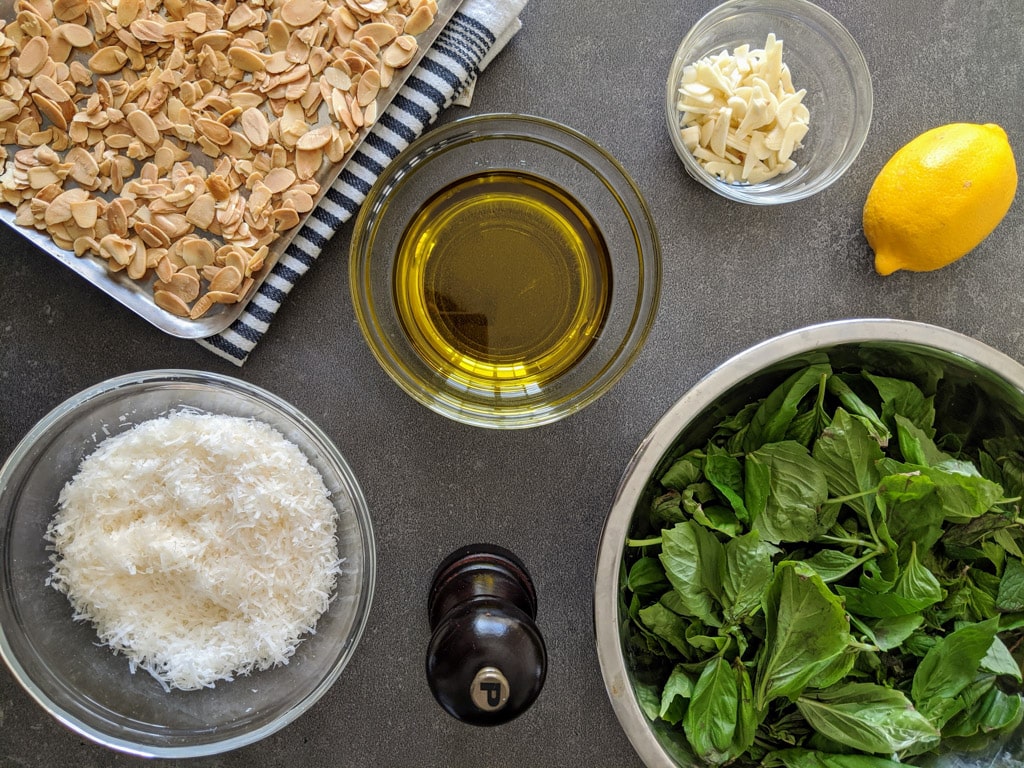
The most commonly recognised type of pesto is pesto alla genovese, AKA basil pesto. A combination of basil, garlic, parmesan, black pepper, pine nuts and plenty of extra virgin olive oil. Despite this, the word pesto is a general use term for a pounded sauce and can be made with multiple different ingredients.
For today’s recipe we’ll be switching out the pine nuts because while they’re absolutely delicious, they cost a small fortune. I want to make a big batch of this so I wouldn’t like to spend too much on the ingredients and roasted almonds are delicious. Feel free to switch out for walnuts, roasted peanuts or your preferred nut. Alternatively, toasted breadcrumbs work just as well and will add a more neutrally flavoured body to your sauce, allowing the qualities of other ingredients to shine.
For our herbs, we’ll be using plenty of both basil and mint. Really most soft herbs would work fine in this style of sauce, feel free to combine things to your taste. A little bit of parsley for some grassy flavours, anise notes from some tarragon, the addition of some picked thyme leaves for savouriness or some citrusy notes if you’re partial to coriander.
I’ll be treating my herbs in two different ways to show you the difference. One batch will be produced with fresh leaves and in the second I’ll quickly blanch the leaves in boiling water and shock them in ice water to stop the cooking. In the latter, the flavour is slightly less intense but the colour becomes more saturated and brighter green. Our final break from tradition comes in the form of a good squeeze of lemon juice. To me, this lifts the sauce and makes it wonderfully bright. Don’t go overboard as we don’t want it to become sour.
A pestle and mortar will probably make the best pesto. Having said that, producing large quantities of pesto with a pestle and mortar can be a soul-crushing, drawn-out experience. If you’re producing a small batch at a time, go for the pestle and mortar, by all means. But for serious pesto production, you’re going to want to turn to your food processor or blender. I highly recommend a session of producing a big batch of pesto at least once a year. It can safely be stored in individual containers in the freezer so that all year round you can enjoy great quality pesto.
A plate of pasta with pesto is an easy meal to put together on those weeknights when you get home late from the office. If you freeze most of your batch, you have the option of slowly defrosting a portion in the fridge the night before. If you didn’t have enough foresight and want a quick meal, take the frozen sauce out of your fridge, break it into smaller pieces and fold it through your warm pasta along with a splash of pasta water until a beautiful sauce is formed. You can jazz things up a little bit further without much effort and produce something to impress your friends and family like in our recipe for paccheri with pesto, broccoli and sausage.
Pesto can also be used as a flavourful spread to a sandwich, as a way to add flavour to a grain or pasta salad or as a sauce for a piece of meat, fish or some vegetables.
Serves 4 (multiply this as needed)
Ingredients
- 2 (20g) large cloves of garlic, peeled
- 60g picked basil and mint leaves
- 25g flaked almonds
- 40g Parmigiano Reggiano, grated
- 150ml Extra virgin olive oil
- Salt, black pepper and lemon juice to taste
- Ice
Equipment
- Chopping board and knife
- Baking tray lined with baking paper
- Blender or food processor
- Fine cheese grater, preferably microplane
- Rubber spatula
- Plenty of storage containers
Optionally, a small pot, a strainer and a bowl of ice
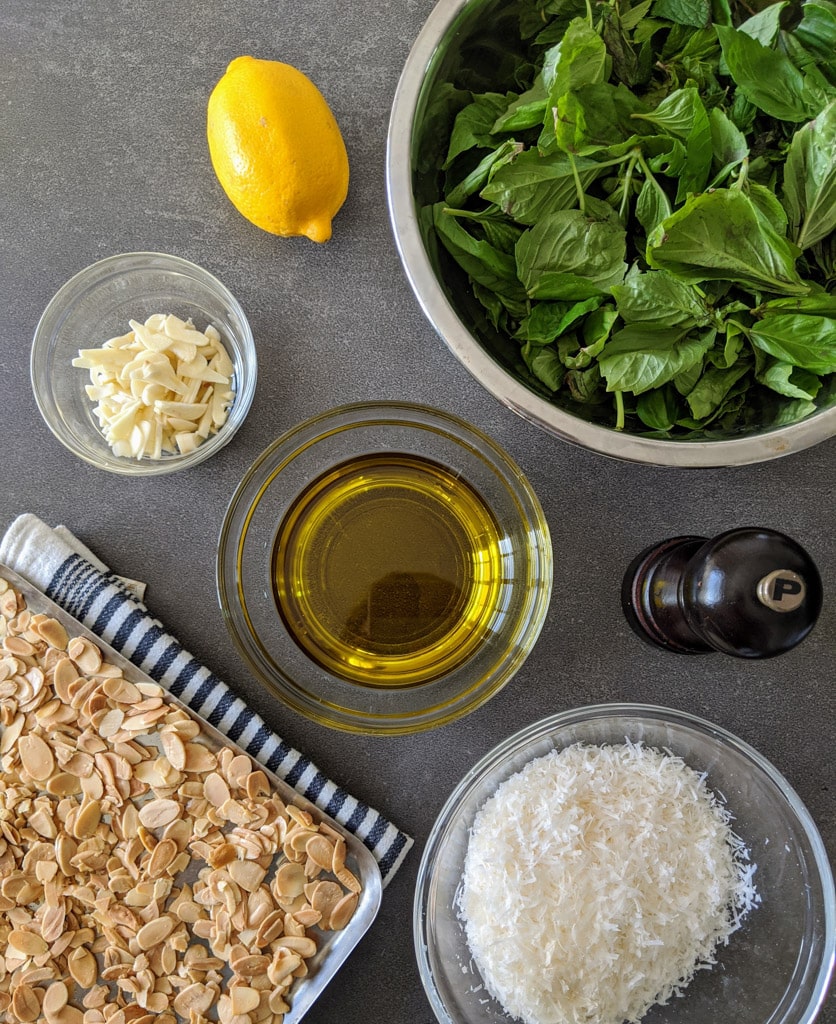
1. Begin by preheating the oven to 160C. Line a baking sheet with baking paper and lay out the flaked almonds. Season with a few drops of olive oil and a pinch of salt and roast in the preheated oven for 15 minutes or until the almonds are light brown. Pull out of the oven and allow to cool at room temperature before using.
I like to roast nuts in a low oven as opposed to a saute pan because they cook more evenly and over a longer period of time, reducing the chance of burning them. Pull them out of the oven before they get too dark, they will continue to colour slightly while they cool on the baking tray.
2. Peel the garlic and cut in half through the stem. In the cross section of the garlic you’ll see something sprouting, that is the germ. If the germ is green and pronounced it lends a bitter quality that we’re not looking for. Remove it gently by using your fingers or a small knife and thinly slice the garlic.
3. If you are blanching to get a vivid green colour in your pesto, place a pot of water on the stove over high heat. Once it comes up to the boil, add your herbs and heat for 20 seconds. Remove by pouring through a strainer, sieve or colander and immediately dip the strainer filled with herbs into a large bowl of water with plenty of ice. Keeping the herbs in the strainer instead of adding them directly to the ice water will make your life easier once you come to retrieve the herbs later.
If not blanching, rinse your herbs until they are completely clean and lightly wring them dry by squeezing gently with your hands, they don’t need to be bone dry.
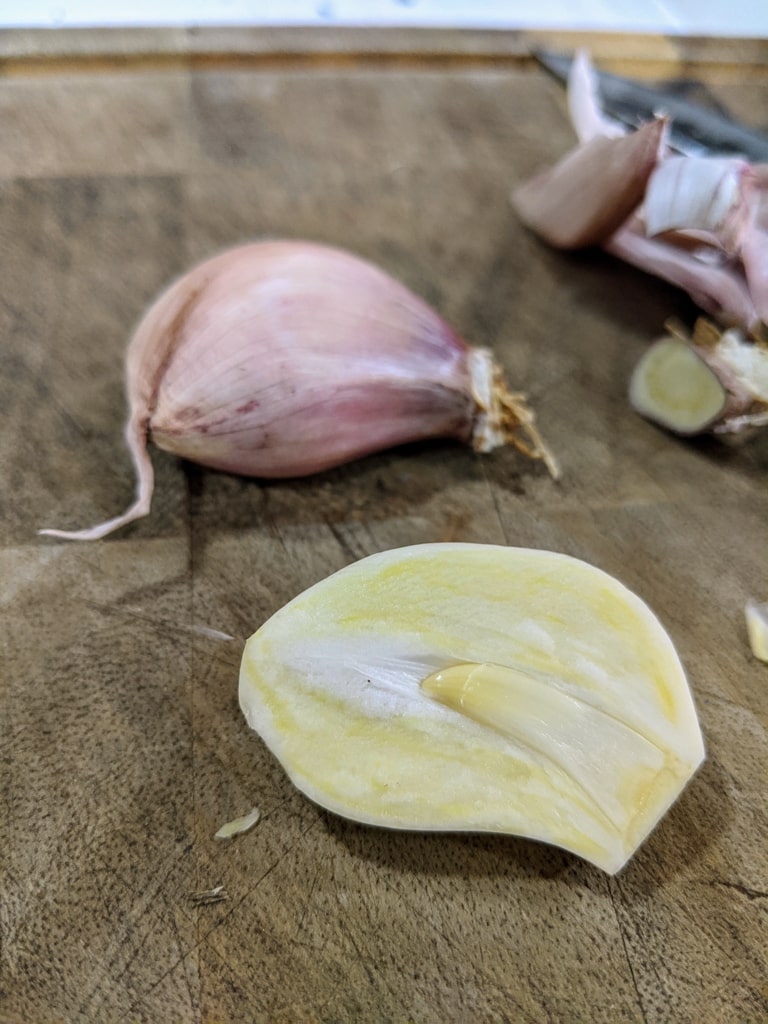
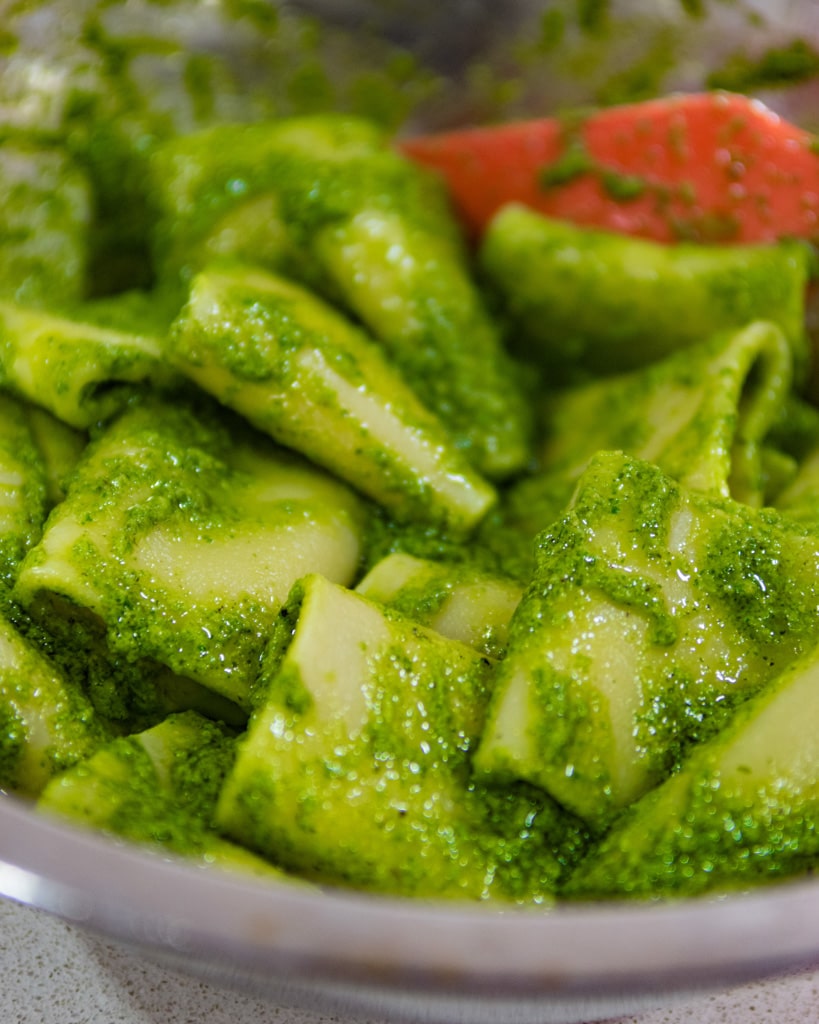
4. To bring it all together, add the almonds and garlic to the bottom of the blender or food processor, top with the herbs, the grated cheese and the drizzle of olive oil. Season with several cracks of black pepper and add 1-2 ice cubes. The ice will keep things cold and bright and adjust the consistency of the sauce without distracting from the flavour. Blend until desired smoothness but don’t let the blender or food processor warm up too much. Season to taste with salt, pepper and a few drops of lemon juice at a time.
5. Once processed, cool immediately, either in your fridge if you]’re going to be using it in the next 2-3 days or into the freezer in individually portioned containers or jars for pesto on demand!
Now that you’ve entered a golden age of pesto, try putting it to use in this recipe where it’s served with Italian sausage, charred broccoli and almonds.
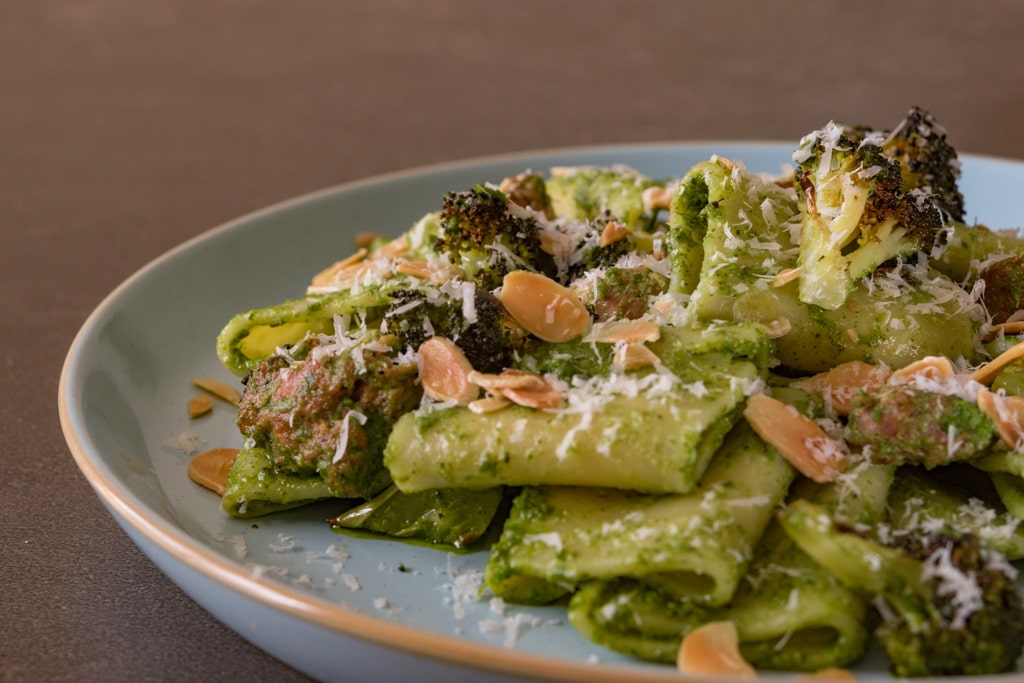
If you found the tips in this article useful and are hungry to discover more chef secrets you can download my free ebook, Pantry Essentials for Maximum Flavour by clicking here. Stock yourself with these flavour bombs and learn to season like a chef to turn even the most mundane of meals into exceptional ones!


